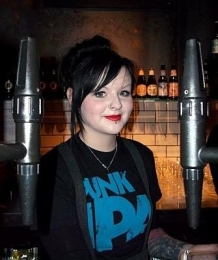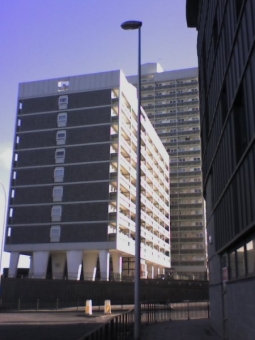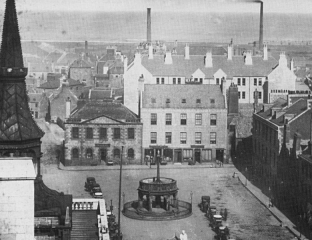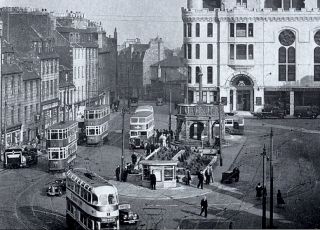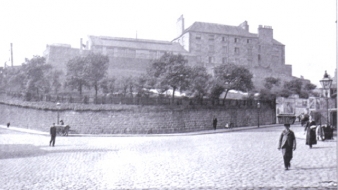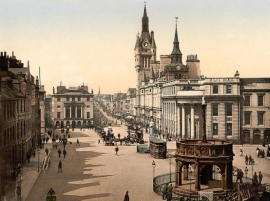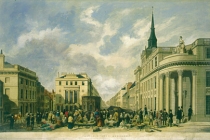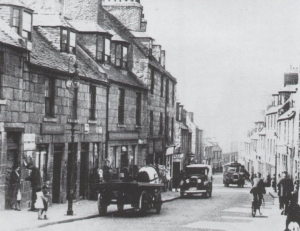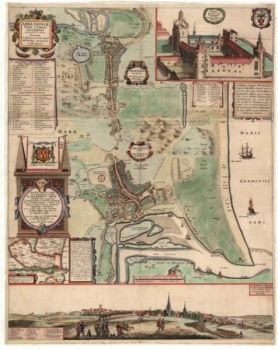Voice’s Old Susannah casts her eye over the events of the last 6 months and the stories, and terms and phrases familiar as well as freshly ‘spun’, which will be forever etched in the consciousness of the people of Aberdeen and the Northeast.
As there are so few interesting local, national or international developments in the news lately, (earthquakes, wars, radiation, armed robberies, Aberdeen Council wheeling and dealing notwithstanding), this looks like a good time to look back at some of the terms and issues covered in Old Susannah’s Dictionary Corner over the last six months.
The column looked at Change Managers, Continuous Improvement, Climate Change and Dangerous dog owners and dogfights. What has happened to the heroes, villains, good, bad and the ugly? Well, let’s see…
Animal Crackers
Let’s Go Clubbing:
Cast your mind back – do you remember Donald Forbes, golfer and fox batterer extraordinaire? What’s become of him? First he told us he had clubbed the fox (which was later found in such a horrible state it had to be put down, to the disgust of 99.95% of the members of Forbes’ golf club).
Then Forbes said he was in ‘mortal danger’ from the fox and therefore swung his club near the fox, but did not hit it. How this tame, well-known fox was going to harm Forbes other than stealing a sandwich from him remains unclear. How the fox was injured fatally also remains a mystery, as Forbes says he did not do it.
Sources tell me Forbes will soon have his day in Court – keep your eyes on the Aberdeen court circular during the month of April. Truth will out. Maybe.
Licensed to maim:
Like-minded animal lover, top oilman, and gunslinger Mr Mervyn New, you will remember, took his gun to work and quite rightly shot some horrid gull chicks that had the nerve to be in a nest near him. One bird was dead outright, the other suffered in agony until the SSPCA could have it put down.
Maybe we should all bring guns to work? On the plus side I bet Mr New looks quite macho with a gun. It would be cruel to suggest he might have a complex against his parents for naming him ‘Mervin’ so I shall say nothing on that subject. My emails to his local and head office have gone unanswered or have been returned marked ‘delivery failure’. It is almost as if Marine Subsea UK do not want to set the record straight or answer any questions on their guns-at-work policy. Maybe some of you readers can get an answer out of them. I will try again when I have made progress on…
…The Tullos Hill Roe Deer:
In a style that would make Highwayman robber Dick Turpin blush, the City have told animal lovers to pay up £225k by 10 May, or the deer get shot. It was all most democratic; they voted on it, except they did not bother to mention the cull to the citizens. Scottish Natural Heritage point out unwillingly (see articles elsewhere in the Voice) that alternatives to gunning the deer down do exist. During this ongoing saga
It is heartbreaking to see these dumb animals going about their usual routines, visiting their favourite drinking holes, unaware of the doom awaiting them
Cllr Aileen Malone proved she could not count; she announced that ‘about one’ person in Aberdeen wrote to her against the cull. She later apologised for this understandable mathematical error – but I do not believe her apology was as public as her P&J statement about there only being ‘about one’ objector. I can however say that at least 500 people have signed various petitions and that is a conservative figure (like me).
It is heartbreaking to see these dumb animals going about their usual routines, visiting their favourite drinking holes, unaware of the doom awaiting them. Nevertheless, at the next possible election, there will most definitely be a cull of Councillors.
The Council had handled the proposed tree planting in its time-honoured way; it held a consultation.
Democracy Inaction
Consultation:
That’s right – the City asked us mere citizen taxpayers what we thought of the tree planting on its lovely website, and gave us until the end of this past January to comment. Just because the City forgot to mention the cull is no reason for the consultation not to be valid, after all, without consultation we would not have our design competition coming up for…
…Union Terrace Gardens:
Back at the time how exciting it was – ACSEF were visiting shopping malls and businesses, giving presentations on a wonderful new way of re-imaging the gardens – turning them into a concrete slab with underground parking. Despite producing a brochure (costing about £300k of our money), which showed exactly that type of outcome – large squares of concrete, one or two tiny trees in planters, and happy people walking around in nice weather, the public vote was against it.
Who would have guessed that the public simply did not understand how important this was to Ian Wood’s future, sorry – to our economic prosperity. So, we will get a design competition instead. Someone already got money earmarked for the rival, earlier, clearer, subtler Peacock plan – money which was intended to be used by Peacock.
I was concerned just last week about the coalition as they are fighting at the National level. However, Councillor Irene Cormack wrote to me to say that this is perfectly normal at elections
No one knows anything about how the money was approved for expenditure; no one knows what goes on inside ACSEF (the online minutes do not give any history or details on this saga worth having). And the worst part is, people have actually organised to protest against having shops and parking.
How else will Stewart Milne’s lovely plans for Triple Kirks work? Answers on a postcard please.
The Press & Journal on 6th April continued a welcome new trend – they are questioning the handling of the UTG situation in an excellent editorial well worth reading.
Public Image:
In a past Old Susannah Dictionary Corner, I was heartened to hear that Kate was going to get an image and publicity makeover by the LibDem team who gave the world Nick Clegg. Here we are about three months later, and I think the results speak for themselves. What do you think of the new Kate? I think the results of Nick’s influence speak for themselves.
Kate’s complaint at the time was that people always complain when things are going bad, but they never compliment the City Council when things are going well. I asked readers for examples of things that went well, but have received not so much as a line.
Coalition:
You might remember some months back when I was worried about our local LibDem / SNP Coalition arguing about how many Council jobs to cut. Nine hundred with no consultation? Six Hundred? Ask for ideas? Cut nothing and then keep quiet? Those must have been exciting times for the staff at St Nick’s. I was concerned just last week about the coalition as they are fighting at the National level. However, Councillor Irene Cormack wrote to me to say that this is perfectly normal at elections. I hope nothing will interfere with how things are working here. In fact, soon all will be perfect, once everyone moves into…
…Marischal College:
In fact, she is known to have sent out e-mails claiming victory, because no one has complained/objected to the stadium lately (hint hint!) But it is not over yet, watch this space
Charities are short of funding, schools are closing, and elderly and vulnerable people are at risk from a host of problems. No matter: we saved Marischal College. The Council told us that they will not disclose what the alternatives were or what they would have cost – it is copyrighted so they claim. We saved Marischal by gutting it entirely, throwing Victorian books into a skip (I have a source who confirms this), and we’re putting in brand new furniture. £60 to 80 million well spent I say.
Loirston Loch – a nice place for a game of football:
Despite lack of consultation with the relevant local Councils, little support from Football fans, and opposition from local residents, follically-challenged Stewart Milne (of ACSEF and AFC fame) got the green light to build a red-light stadium in the Greenbelt land of Loirston.
Scottish Natural Heritage weren’t bothered (despite SAC land status, protected species and RSPB objection); Brian Adam MSP was ecstatic, and Richard Baker MSP was ignored.
Kate Dean was the impartial convener of a marathon hearing on the matter, which was always going to end favourably. In fact, she is known to have sent out e-mails claiming victory, because no one has complained/objected to the stadium lately (hint hint!) But it is not over yet, watch this space. If there has not been too much dialogue at present, it is because of the massive legal points being researched prior to the battle royale.
Conclusion – A Brighter Outlook:
The most important thing to remember when considering the recent past is that we now all have A Brighter Outlook. I know this, because the City Council put it in their literature. It is an ACSEF slogan, it is how the City does business, it is all brighter. After all, how much darker can things possibly get?
Next week:
Since ACSEF benefited so much from its new logo and ‘A Brighter Outlook’ slogan, Old Susannah is getting a makeover. I do not know exactly what to expect and what the Voice editors have in mind, I just hope I will come out looking as cool, modern and with it as ACSEF does.
Thanks for reading, and thanks for the very nice/interesting/excellent e-mails and comments.

